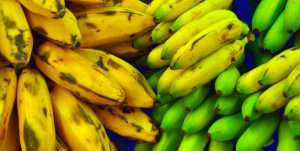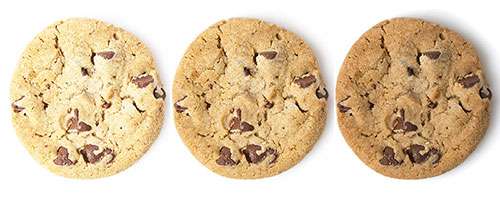
Color is a deciding factor for consumers when it comes to food choices. Food has to “look right” to “taste right.” Image source: Flickr user Ian Ransley
Colorimetry has been used in a variety of scientific studies to create specific color standards and visual comparisons. The standards and comparisons within this field can be of great value when evaluating color and consistently repeating data. Test results in colorimetrics through the use of spectrophotometers can give us a wealth of information about the choices we make that are dependent on color, especially those involving the foods we eat.
The “taste” of color
Color is one of the main factors consumers use when making choices in food. Color acts as an indicator for freshness or spoilage, how cooked or done a food appears, and it even affects our perception of flavor. Input involving these senses originates in one specific area of the brain. Just like electrical wiring, these input connections can oftentimes cross one another or connect one sensory reaction to another.This is why many people associate a specific color with a certain flavor expectation. Typically a yellow-green color indicates something sour, whereas pink and purple are more commonly associated with sweetness.

Judging by color, which cookie do you believe tastes better?
If a food color does not match the predetermined flavor expectation, it will often times be rejected. If you picked up a glass filled with a clear liquid thinking it was water, but upon taking a swig you were appalled by the taste of cola, this would align with the theory. Even if you regularly enjoy refreshing cola beverages, your brain will most likely reject the flavor because the color didn’t match your expectation.
Food producers and manufacturers rely heavily on these theories to determine the color options and choices needed for customer satisfaction. The science of color-psychology dictates many of the color choices we see today and is highly dependent on color technology. The ability to consistently reproduce the same color option is essential for product appeal and is often the deciding factor in consumer choice.
Spectrophotometers: the key to color consistency, repeatability, and food safety
When it comes to product choices, color expectations are automatically linked to flavor expectations, which translate to quality for the consumer. In the food industry, the applications of colorimetry and the use of spectrophotometers are essential when it comes to creating a product that repeatedly maintains color consistency. Color reliability is an expectation in today’s food market and a pivotal deciding factor in consumer choice.

